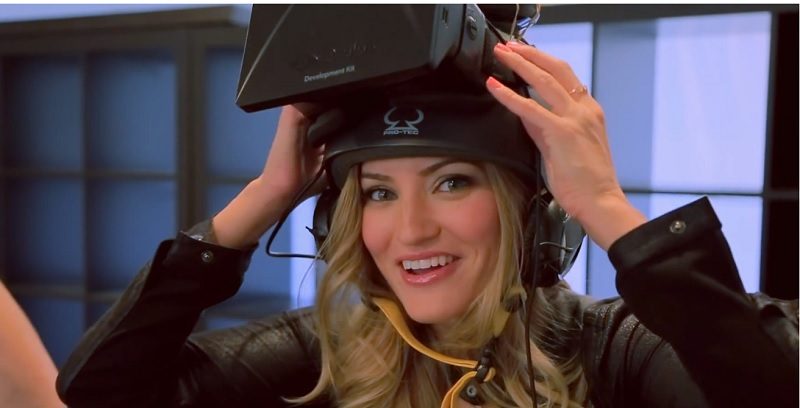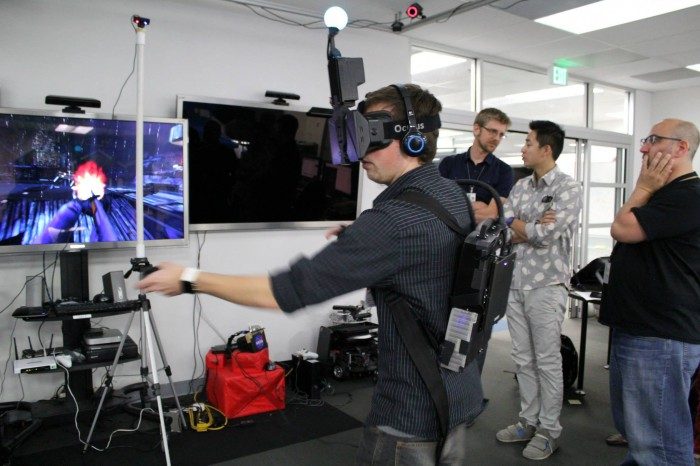Justine ‘iJustine’ Ezarik met with the minds behind Project Holodeck, a VR platform that offers full avatar embodiment, to check out the latest work done by the team.
Earlier this year I got to step into Project Holodeck, a virtual reality platform with full avatar embodiment that’s development by a team of students from the University of Southern California. Project Holodeck has recently evolved into a new company called Survios. There’s little information thus far about what the company intends to do with the VR platform, but we do know that they were recently at NASA with an interesting looking prototype of their system:
On the latest episode of AOL’s HardWired, iJustine met with Project Holodeck’s Director and Producer, James Iliff and Nathan Burb, and got a chance to check out the system for herself.
Much appears to have changed since I was last in the Holodeck. For one, the team has upgraded from their own ‘Socket’ HMD to the Oculus Rift. The very early alpha of Wild Skies that I saw has now been fleshed out into a much more developed game, not to mention that Zombies on the Holodeck is now, well… on the Holodeck. We’ve got our eye on Survios and are keen to find out where they intend to take their system.








